#Long-beaked Common Dolphin
Text
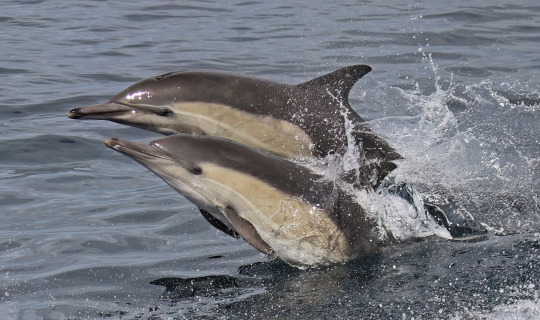
Eastern North Pacific long-beaked common dolphin Delphinus delphis bairdii
Observed by anudibranchmom, CC BY-NC
#Delphinus delphis bairdii#Eastern North Pacific long-beaked common dolphin#Cetacea#Delphinidae#cetacean#dolphin#North America#United States#California#Pacific Ocean#Monterey Bay
68 notes
·
View notes
Text

I made a mistake in my last post. I confused the Long-Beaked Common Dolphin species with its subspecies the Arabian Common Dolphin. They are so alike that I am actually surprised I was able to notice the difference. The Long Baked Common Dolphin's beak is notably shorter and its body is a little bit slimmer that the subspecies. Colorwise is not a good way to tell because the variations are plenty and both, species and subspecies can present these variations. As far as I know, the Arabian Common Dolphin can be elevated to a species. More studies need to be conducted but that is the indicator.
Long-Beaked Common Dolphin
The Long-Beaked Common Dolphin was once thought to be the same species as the Short-Beaked Dolphin, but recent research has confirmed that they are, in fact, distinct species. Unlike their short-beaked cousins, this species tends to stay closer to the coast.
While not as abundant as the Short-Beaked Dolphin (which is the most common dolphin species), the Long-Beaked Common Dolphin is not currently classified as threatened or endangered. Some scientists have suggested the existence of subspecies within this species, but only the Arabian Common Dolphin has been officially recognized.
Long-Beaked Common Dolphins are known to form large social groups that can range in size from 100 to 500 individuals, and occasionally even reach into the thousands.
________________________________________
Credits:
Long-Baked Common Dolphin
Whales, Dolphins, and Seals, A field Guide to Marine Mammals of the World - Hadoram Shirihai / Brett Jarret
Ballenas, Delfines y Marsopas, Manuales de Identificación - Mark Carwardine, Martin Camm
_________________________________________
Thank you guys for all the support. Remember that likes, comments, and reblogs will help me greatly. And, if you want to help me even more you can always purchase one of my wallpapers, here.
See you
#dolphins#long beaked common dolphin#cute dolphin#cute animals drawing#cute animals#illustration scientifique#scientific illustration#science side of tumblr#wild animal#natural illustration#conservation#infographic#drawing animals#love animals
51 notes
·
View notes
Text
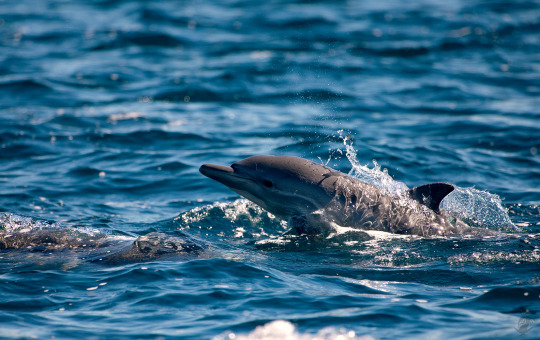
Long-Beaked Common Dolphin (delphinus capensis)
taken off the coast of California
status: protected
A small Common dolphin with a very cute dorsal fin! This pod was particularly active chasing around some fish somewhere in the depths. Despite the speed the adults move at, many of these young pod members seem to have an easy enough time keeping up!
#Common Dolphin#Long Beaked Common Dolphin#dolphin#Delphinus capensis#wildlife#wildlife photography#photography#canon#canon 6d mark ii#whale watching#baby dolphin#cute
7 notes
·
View notes
Text
It started with a fish
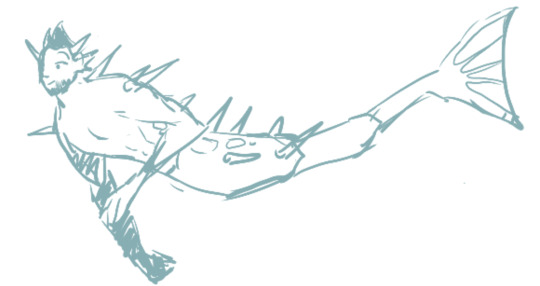

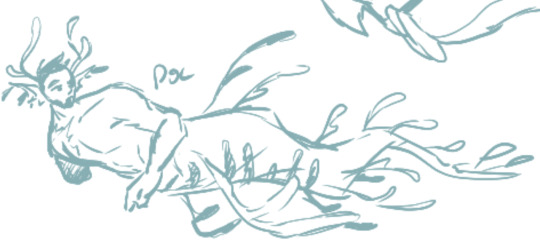
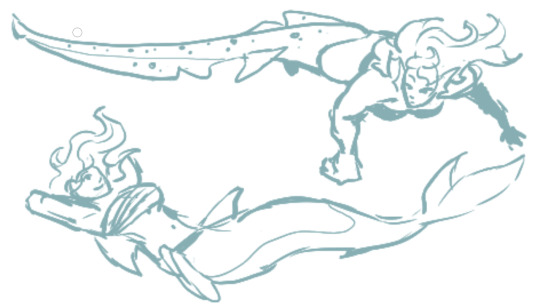



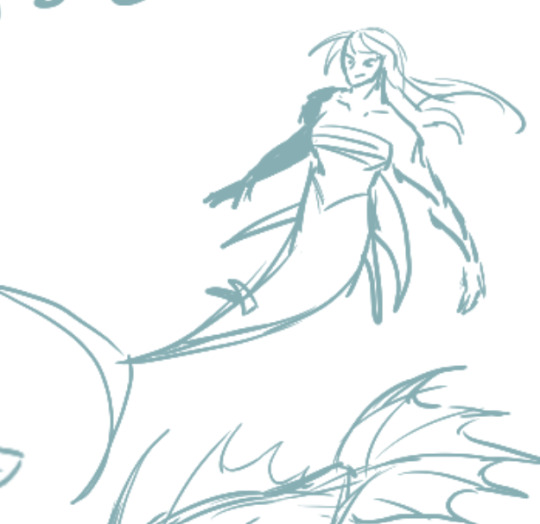


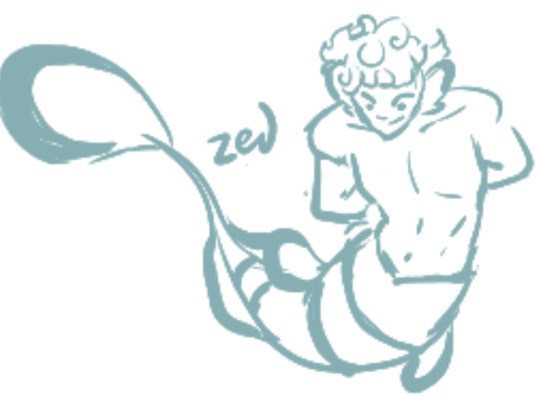
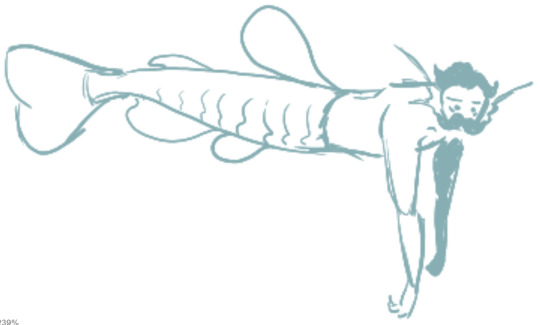
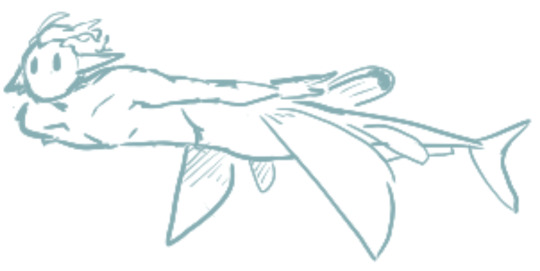

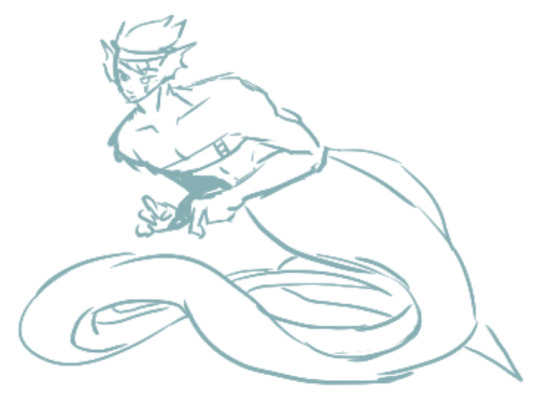


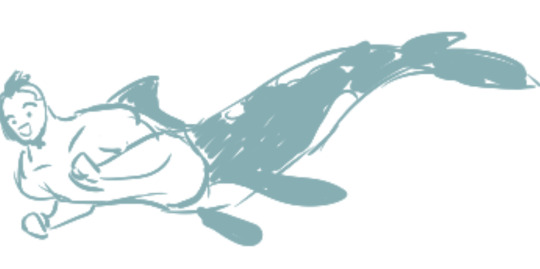

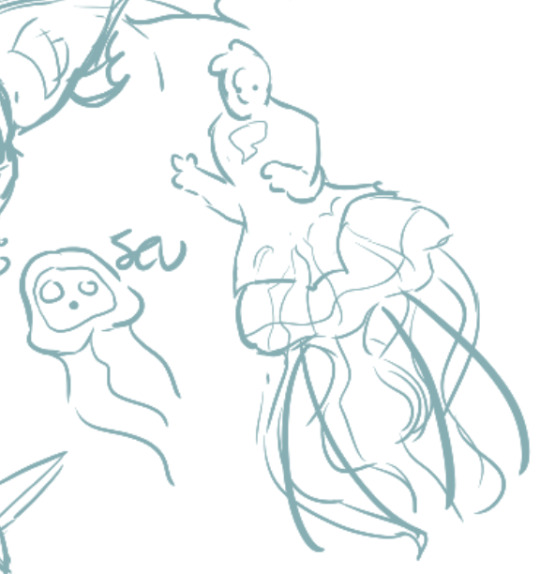
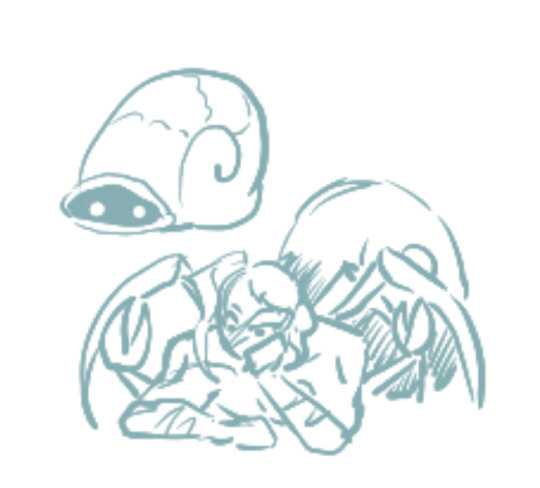




how did it end up like this-
Bdubs - Pleco/leafsheep :: Cub - Dumbo Octopus :: Doc - Sea dragon :: Etho - Eel :: False - Swordfish :: Gem - Rainbow Trout :: Grian - Flying Fish :: Hypno - Tiger shark :: Impulse - Orca :: Iskall - Tetrafish :: Jevin - Jellyfish :: Joe - Remora :: Keralis - Octopus :: Mumbo - Catfish :: Pearl - Short Beak common Dolphin :: Ren - Dogfish :: Scar - Manta Ray :: Stress - Pink Betta :: Tango - Red Lionfish :: TFC - Anglerfish :: Beef - Bull trout :: Wels - Sturgeon :: Xb - Guardian :: Xisuma - Hermit Crab :: Zed - Clownfish :: Cleo - Zebrashark
*drawn sizes are not to scale
long story short someone (@kitsunespawz) mentioned fish-ificating hermits in discord right after i woke up and all of my neurons fired at once. and ive now spent all day drawing all the hermits as mermaids.
i. fucking love fish. i apologize for nothing except for the above mentioned who i stole this idea from. im very sorry.
full canvas down here. colored and uncolored

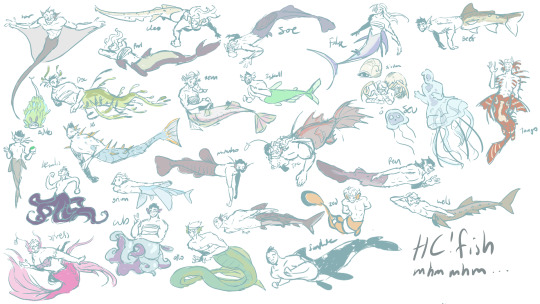
#hermitcraft#hermitcraft au#mermaids#idk if i have to tag everyone#but im going to do it anyway#bdoubleo100#cubfan135#docm77#ethoslab#falsesymmetry#geminitay#grian#hypnotizd#impulsesv#iskall85#ijevin#joehillstsd#keralis#mumbojumbo#pearlescentmoon#rendog#goodtimeswithscar#stressmonster#tangotek#tinfoilchef#vintagebeef#welsknight#xbcrafted#xisumavoid#zedaphplays
758 notes
·
View notes
Text
Brazilian peculiar fauna
As promised, my peculiar Brazilian fauna! I will explain what each animal is

1 .Two-headed jaguar
Exactly similar to two-headed lynxes, these large cats inhabit forests and are aggressive. They are large animals and need help to survive as both heads need to eat equally for the animal to survive.
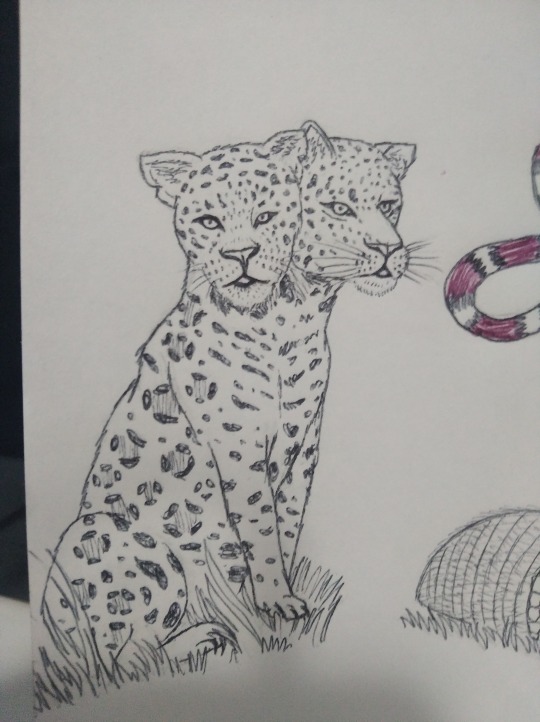
2. Demon Piranhas
They are a dangerous and peculiar species of piranha, they have larger than normal teeth and horns, they are larger than common piranhas and they even devour alligators, it is an extremely dangerous animal.
3. Hummingbird with two tongues
This animal has a beak that opens much wider than that of a common hummingbird, it has two tongues that help it when eating. They eat much faster than a common hummingbird. These birds are naturally extremely fast and are peaceful.

4. Pink dolphin - Holadeira
Photographed in 1995 by Jeremy Wade, this species of Amazonian dolphin is extremely rare to find. It has notches on its back that are very characteristic. Unlike normal pink dolphins, this animal is aggressive just like a piranha, it is recommended to stay very far away from this animal
5. Fire maned wolf
This large animal is peaceful, extremely cautious and does not pose any immediate danger. However, if cornered or in a situation of danger or a lot of stress, this animal's body will catch fire. Fire does not hurt it, it is used solely as defense, unfortunately this animal is often responsible for Forest fire

6. Harpybara
This animal is a mix of a harpy and a capybara, harpybaras have the wings and tail of harpies and the body of a friendly and cute capybara, it is a peaceful and omnivorous animal. She swims very well, is terrestrial, and flies long distances, but prefers to stay on the ground and lie down under the shade of trees. They are the preferred animals as pets for ymbrynes, as they are completely harmless to children and are good companions.

7. Peculiar Coral Snakes
Coral snakes are already naturally dangerous with their deadly venom, now imagine a coral snake that can swallow anything regardless of size. This is the peculiar ability of these snakes. In addition to the naturally dangerous venom, these snakes are born with a jaw that stretches infinitely and an elastic body. They can eat things infinitely bigger than themselves and go years without needing to eat again. Obviously they are extremely dangerous.
8. Indestructible armadillo
Of normal size to that of any common armadillo, the indestructible armadillo has the peculiarity of its impenetrable body, its shell is proof of everything, it cannot be broken, shot or burned. It's indestructible.

Soon you met the ymbryne who rescues and shelters all these animals, Miss Tainá Urutau.
#mphfpc#miss peregrines home for peculiar children#peculiar#ransom riggs#art#fanart drawing#miss peregrine book#Peculiar Animals#animals#my art#artists on tumblr#traditional art#jaguar#Piranha#maned wolf#Wolf#armadimon#coral snake#snake#feline#brazil#birds
46 notes
·
View notes
Text
Life in the Early Triassic

(first row: Sclerosaurus, Lystrosaurus; second row: Hupehsuchus, Triadobatrachus, Cartorhynchus; thrid row: Rebellatrix, Atopodentatus; fourth row: Aphaneramma, Erythrosuchus)
Lystrosaurus - Julio Lacerda
Erythrosuchus - Mark Witton
Rebellatrix - Michael Skrepnick
Aphaneramma - Gabriel Ugueto
Cartorhynchus, Hupehsuchus, Atopodentatus - Nobu Tamura
Triadobatrachus - Alexey Malitskiy
Sclerosaurus - Wikimedia
We‘ve reached the Triassic period and with it the Mesozoic Era, the Age of Reptiles! Right now (about 250 million years ago), the reptiles are not dominating yet - in fact no one really was doing too well, as the Early Triassic was mostly a recovery period with low diversity after the most devastating mass extinction of all time, The Great Dying, at the end of the Permian.
The one exception to this is Lystrosaurus. The pig-sized herbivores somehow made it through the mass extinction mostly unscathed and in a now barren world they re-diversified, took up empty niches and became the most common vertebrate in many areas. It is not entirely clear why they survived. Maybe it was hibernation or burrowing that gave them some kind of protection from the worst parts of The Great Dying, maybe they were just lucky. Whatever it was, these prehistoric cockroaches marked one of the last big hurrahs of the synapsids (our own linage), before they went into hiding and lived their lifes as rodent size critters in the shadows of the reptiles for the following 200 million years or so.
The synapsids were the stars of the Permian, but only three groups of them made it into the Triassic: The carnivorous therocephalians and the herbivorous dicynodonts like Lystrosaurus with bulky bodies, mostly toothless beaks and tusk-like canines. They both went extinct during the Triassic. A third group, the cynodonts, survived much longer and will eventually include all modern mammals, from the tiniest bats to the biggest whales. But right now all of that is just some distant future.
Right now, at the beginning of the Triassic, a lot of other groups hurry to fill empty spaces. Several groups of reptiles decided that, after their ancestors once spent a lot of time and effort to evolve a terrestrial lifestyle, they want to return to the oceans. This included early cousins of the ichthyosaurs (those dolphin-shaped marine reptiles that lived alongside the dinosaurs) like Cartorhynchus and very basal sauropterygians. The most famous member of that group are the Loch-Ness-Monster-looking plesiosaurs, but one early member was the strange Atopodentatus. They possibly used their weird mouths to eat algae, making them one of the earliest herbivorous marine reptiles.
On land, the most interesting development might be the rise of the archosaurs and their close relatives. Over the span of the Mesozoic, the age of reptiles, they became the dominate group of life including many fan-favorites: The giant dinosaurs, the flying pterosaurs, the birds we have today and the wide variety of crocs, both past and present. At the beginning of the Triassic, they are just starting out, but 5 m long predators like the big-headed Erythrosuchus (although they are technically not quite archosaurs), already give a glimpse into their future.
22 notes
·
View notes
Text

Grzimek's Animal Life Encyclopedia, vol. 11, Mammals II. 1972. Illustrated by Peter Barrett.
Beaked whales;
1.) Baird's beaked whale (Berardius bairdii)
2.) Strap-toothed whale (Mesoplodon layardii)
3.) True's beaked whale (Mesoplodon mirus)
4.) Sowerby's beaked whale (Mesoplodon bidens)
5.) Northern bottlenose whale (Hyperoodon ampullatus)
White whales and narwhals;
6.) Beluga whale (Delphinapterus leucas)
7.) Narwhal (Monodon monoceros)
Long snouted dolphins;
8.) Rough-toothed dolphin (Steno bredanensis)
9.) Atlantic humpback dolphin (Sousa teuszii)
True dolphins;
10.) Indo-Pacific bottlenose dolphin (Tursiops aduncus)
11.) Common dolphin (Delphinus delphis)
12.) Striped dolphin (Stenella coeruleoalba)
13.) Atlantic white-sided dolphin (Lagenorhynchus acutus)
14.) Common bottlenose dolphin (Tursiops truncatus)
15.) Risso's dolphin (Grampus griseus)
16.) Northern right whale dolphin (Lissodelphis borealis)
Pilot and killer whales;
17.) Long-finned pilot whale (Globicephala melas)
18.) Pygmy killer whale (Feresa attenuata)
19.) Irrawaddy dolphin (Orcaella brevirostris)
20.) Orca (Orcinus orca)
21.) False killer whale (Pseudorca crassidens)
Commerson's dolphins;
22.) Commerson's dolphin (Cephalorhynchus commersonii)
Porpoises;
23.) Harbour porpoise (Phocoena phocoena)
24.) Spectacled porpoise (Phocoena dioptrica)
25.) Dall's porpoise (Phocoenoides dalli)
26.) Indo-Pacific finless porpoise (Neophocaena phocaenoides)
#cetaceans#beaked whales#baird's beaked whales#strap-toothed whales#true's beaked whales#sowerby's beaked whales#northern bottlenose whales#belugas#narwhals#dolphins#rough-toothed dolphins#atlantic humpback dolphins#indo-pacific bottlenose dolphins#common dolphins#striped dolphins#atlantic white-sided dolphins#common bottlenose dolphins#risso's dolphins#northern right whale dolphins#pilot whales#long-finned pilot whales#pygmy killer whales#irrawaddy dolphins#orcas#false killer whales#commerson's dolphins#porpoises#harbour porpoises#spectacled porpoises#dall's porpoises
267 notes
·
View notes
Text
Some of my Fakemon ideas. If you want to illustrate any of them, go right ahead! Just be sure to tag me so I can see the art! And who knows, maybe I’ll draw some, too!
Chirplume— Bird-of-Paradise Pokémon
Type: Flying, normal
Inspiration: Lawes's Parotia
Etymology: "Chirp" and "plume"
Parotiris— Bird-of Paradise Pokémon (evolved form of Chirplume)
Type: Flying, normal
Inspiration: Lawes's Parotia, King-of-Saxony Bird of Paradise
Etymology: "Parotia" (after the bird-of paradise) and "Iris" (the Greek goddess of the rainbow)
Notes: Has a prehensile tail and head plumes.
Peregyr— Wandering Falcon Pokémon
Type: Flying
Inspiration: Peregrine Falcon and Gyrfalcon
Notes: Can be found in most regions. In certain regions, it has variant forms.
Etymology: "Peregrine" and "Gyr" (after the two real-world falcons that inspired it)
Martree— Pine Marten Pokémon
Type: Grass
Inspiration: American Pine Marten
Etymology: "Marten" and "tree"
Notes: The grass-type starter for my region.
Martenrec— Pine Marten Pokémon (evolved form of Martree)
Type: Grass
Inspiration: American Pine Marten, Lowland Streaked Tenrec
Etymology: "Marten" and "tenrec”
Martamarack— Conifer Pokémon (evolved form of Martespruce)
Type: Grass
Inspiration: American Pine Marten, Lowland Streaked Tenrec
Etymology:"Marten" and "tamarack"
Notes: Has sharp, pine-needle-like spines in its fur, and its tail is completely covered in spines. Not only that, the spines come loose easily, so it's a good defense against predators (and the occasional human).
Melodiark— Seasons Pokémon
Type: Flying, grass
Inspiration: Horned Lark, Western Meadowlark, and Yellow-throated Longclaw
Etymology: "Melodious" and "lark"
Notes: Its throat patch changes color with the seasons.
Eeviave— Evolution Pokémon
Type: Flying, normal
Inspiration: Plain-colored Tanager
Notes: Basically an avian form of Eevee. Has the following evolutions:
Arboriave (grass type)
Flariave (Fire type)
Aquariave (water type)
Glaciave (ice type)
Nyctiave (dark type)
Joltiave (electric type)
Mysticiave (psychic type)
Terestriave (ground type)
Notes: All forms are based on tanagers in the genera Tangara and Stilpnia.
Falcyan— Blue Falcon Pokémon (pre-evolution of Peregyr)
Type: Flying/normal
Inspiration: Peregrine Falcon, Merlin Falcon
Etymology: "Falcon" and "Cyan"
Delphy— Dolphin Pokémon
Type: Water, Psychic
Inspiration: Atlantic Spotted Dolphin, Long-beaked Common Dolphin
Etymology: From the Latin word delphinus, meaning dolphin. The name (and secondary typing as "psychic") is also a reference to the Oracle of Delphi in Greek mythology.
Stenellys— Dolphin Pokémon (evolved form of Delphy)
Type: Water, Psychic
Inspiration: Atlantic Spotted Dolphin, Long-beaked Common Dolphin
Etymology: From the Spotted Dolphin's scientific name, Stenella frontalis.
Prairantler— Pronghorn Pokémon
Type: Grass, electric
Inspiration: Pronghorn Antelope, Thomson's Gazelle
Etymology: "Prairie" and "Antler"
Mantivy— Mantis Pokémon:
Type: Grass, bug
Inspiration: Praying Mantis, bark mantis
Etymology: "Mantis" and "Ivy"
Liturgorsa— Bark Mantis Pokémon (evolved form of Mantivy)
Type: Grass, bug
Inspiration: Praying mantis, bark mantis
Etymology: From Liturgusa, a genus of bark mantids, and "gorse", a thorny plant.
Eeviave's evolutions
Arboriave— Climbing Bird Pokémon
Type: Grass, flying
Distinguishing features: Reversible toe, allowing feet to switch between anisodactyl (3 toes in front and 1 toe in back) for perching and zygodactyl (2 toes forward, 2 toes back) for climbing.
Plumage: Two-toned green head (with short, spiky crest that can be raised or lowered), black chest and back; bright green spot on chest, green markings on wings, tail, and flanks; white belly
Flariave— Firebird Pokémon
Type: Fire, flying
Features: Brilliant red-orange plumage; short crest of flame-feathers. The flame-crest gets bigger when the bird is excited or agitated. Flariave is also usually warm to the touch.
Aquariave— Swimming Bird Pokémon
Type: Water, flying
Features: Waterproof feathers, semi-webbed feet. Also has nictitating membranes (transparent eyelids) that it uses to protect its eyes when diving underwater.
Plumage: Almost identical to Arboriave (its "sibling" evolution) except the green is replaced with blue and instead of a spiky crest, it has a few feathers on the back of its head that stick up.
Glaciave— Snowbird Pokémon
Type: Ice, flying
Features: Pale blue and white/silver plumage, and flight feathers resembling ice crystals. Can survive in colder environments than any of Eeviave's other evolutions.
Nyctiave— Solitary Pokémon
Type: Dark, flying
Features: Jet-black plumage with white belly and a few colored rings (much like Umbreon, with whom it is often seen). It is the only nocturnal evolution of Eeviave, and also the most difficult to find in the wild.
Velociave— Fast Flying Pokémon
Type: Electric, flying
Features: Gold, blue, and black plumage; long, pointed wings and tails. Fastest of all of Eeviave's evolutions. Much like real swallows, it lives in large colonies.
Mystiave— Mystic Bird Pokémon
Type: Psychic, flying
Features: Mostly purple and blue plumage— resembling an amethyst crystal. Also has telekinetic and telepathic powers.
Terrestriave
Type: Ground, flying
Features: Muted brown and orange plumage; long, sturdy legs, and long hind claws for traction. Also has spurs on its wings, which it uses for self-defense.
More ideas
Florafawn— Fawn Pokémon
Type: Grass, electric
Inspiration: Pronghorn antelope fawn
Certhitta— Treecreeper Pokémon
Type: Grass, flying
Inspiration: Brown Treecreeper, Red-breasted Nuthatch
Etymology: From Certhia (the genus name for treecreepers) and Sitta (the genus name for nuthatches)
Notes: Unusually for a bird Pokemon, it has four legs. (The inspiration for this came from the little bird creature in the Botanicula game.) this guy:

Boreowl— Owl Pokémon
Type: Ice, flying
Inspiration: Boreal Owl, Northern Hawk Owl
Etymology: Derived from the Boreal Owl's common name.
Lacertri— Gliding Lizard Pokémon
Type: Grass
Inspiration: Draco Lizard
Etymology: Lacerta (Latin for lizard) and "tree."
Laceratur— Gliding Lizard Pokémon
Type: Grass
Inspiration: Draco Lizard
Etymology: Lacerta (Latin for lizard) and labatur (Latin for glide).
Dendrocerta— Forest Dragon Pokémon (evolved form of Laceratur)
Type: Grass, dragon
Inspiration: Draco Lizard
Etymology: Dentro (Greek for tree) and Lacerta (Latin for lizard.)
Notes: Cannot actually fly, but uses its patagia (flaps of skin on its flanks) to glide hundreds of meters. Trained Dendrocerta will even let humans ride on their backs!
Calypta— Hummingbird Pokémon
Type: Flying, psychic
Inspiration: Costa's Hummingbird
Etymology: From the Latin name of the Costa's Hummingbird: Calypte costae.
Pipeslance— Sharp Beak Pokémon
Type: Flying, steel
Inspiration: Spotted Sandpiper, Northern Lapwing
Etymology: “Pipes” (short for sandpiper), and “lance”, a medieval stabby stick.
Notes: Its beak is as sharp as a dagger, as are the spurs on its wings and legs. You do not want to mess with a nesting colony of these Pokemon.
Gulpa— Bass Pokémon
Type: Water
Inspiration: Largemouth Bass
Etymology: "Gulp" + the letter "a"
Lemair— Sifaka Pokémon
Type: Grass, flying
Inspiration: Verreaux's Sifaka, flying squirrel
Etymology: "Lemur" + "air"
Notes: Like Lacertri, Laceratur, and Dendrocerta, this Pokemon cannot actually fly. Instead, it leaps and glides through the treetops.
Erminator— Ermine Pokémon
Type: Ice, fighting
Inspiration: Ermine
Etymology: "Ermine" + "Terminator"
Batsox— Savannah Fox Pokémon
Type: Ground, grass
Inspiration: Bat-eared fox
Etymology: From the Bat-eared Fox's common name, and from "socks" (a reference to its dark brown paws.)
Eromreven— Mimic Pokémon
Type: Dark, flying
Inspiration: Common Raven
Etymology: “Nevermore” spelled backwards.
Notes: Can convincingly mimic the calls of other Pokemon, and human voices as well.
Xaroc— Raven Pokémon (pre-evolution of Eromreven)
Type: Dark, flying
Inspiration: Common Raven
Etymology: From the Common Raven’s Latin name, Corvus corax. (Corax spelled backwards is “Xaroc.”)
Pipip— Sandpiper Pokémon (pre-evolution of Pipeslance)
Type: Flying, normal
Inspiration: Least Sandpiper, Piping Plover
Etymology: Onomatopoeia of the sandpiper’s calls.
Peregreen— Grass Falcon Pokémon
Type: Grass, flying
Inspiration: Peregrine Falcon, Merlin Falcon
Etymology: "Peregrine" + "green"
Emeralcon— Grass Falcon Pokémon (evolution of Peregreen)
Type: Grass, flying
Inspiration: Peregrine Falcon, Prairie Falcon
Etymology: "Emerald" + "falcon"
Nocterne — Black Tern Pokémon
Type: Dark, Flying
Inspiration: Black Tern, White-winged Tern
Etymology: “Nocturne,” “nocturnal,” and “tern”
Terraptor— Hunter Bird Pokémon
Type: Flying, fighting
Inspiration: Secretary bird (also called the hunter-bird)
Etymology: “Terra” (Latin for “Earth”) and “raptor”
Vuelox— Swift Fox Pokémon
Type: Electric
Inspiration: Swift Fox, Kit Fox
Etymology: From the Swift Fox’s Latin name, Vulpes velox.
Strykthorn— Shrike Pokémon
Type: Flying, fighting
Inspiration: Loggerhead Shrike
Etymology: “Strike” (spelled as “stryk”) and “thorn”
Verdarter— Flycatcher Pokémon
Type: Flying, grass
Inspiration: Verditer Flycatcher, Empidonax flycatchers
Etymology: “Verditer” + “darter”
Embird— Fire Thrush Pokémon
Type: Fire, flying
Inspiration: Varied Thrush
Etymology: "Ember" + “bird”
Notes: The fire-type starter for my region.
Calibender— Clownfish Pokémon
Type: Water
Inspiration: Clownfish
Etymology: a word my friend made up.
Laniorn— Tiny Shrike Pokémon (pre-evolution of Strykthorn)
Type: Flying, fighting
Inspiration: Loggerhead Shrike
Etymology: Lanius, (the genus name for shrikes) and ornis (meaning “bird” in Latin or Greek).
Bufflebird— Buffalo Bird Pokémon
Type: Flying, normal
Inspiration: Brown-headed Cowbird (AKA Buffalo-bird)
Etymology: “Buffle” + “bird”
Notes: Follows hoofed-mammal Pokémon around. The female lays her eggs in the nests of other songbird Pokémon, who raise the chicks as their own.
Auriole— Golden Bird Pokémon
Type: Flying, electric
Inspiration: Baltimore Oriole, Hooded Oriole
Etymology: Aurum (Latin for “gold”) and “oriole”
Tanagem— Tanager Pokémon
Type: Flying, fairy
Inspiration: Golden-hooded Tanager
Etymology: “Tanager” and “gem”
Reiharr— Marsh Pokémon
Type: Flying, ghost
Inspiration: Northern Harrier
Etymology: Anagram of the word "Harrier."
Argentaros— Silver Bird Pokémon
Type: Flying, steel
Inspiration: Silver-backed Tanager
Etymology: Argentum (Latin for silver) and pajaro (Spanish for bird.)
Notes: Is the counterpart of Auriole.
Pescatt— Fishing Cat Pokémon
Type: Water
Inspiration: Fishing cat, European Wildcat
Etymology: Pescar (Spanish for "to fish") and "cat" with an extra T
Notes: One of the three starters for my region. The other two are Lacertri and Embird.
Cheerilee— Robin Pokémon
Type: Flying, normal
Inspiration: American Robin
Etymology: Onomatopoeia of the American Robin's song.
Alithiyx— Truth Pokémon (evolution of Calypta)
Type: Flying, psychic
Inspiration: Marvelous Spatuletail Hummingbird, Plovercrest Hummingbird
Etymology: From the Greek Alitheia, meaning "truth."
Notes: Using its psychic powers, this Pokémon can sense the thoughts and emotions of others.
Lynxie— Lynx Kitten Pokémon
Type: Ice
Inspiration: Canada Lynx
Etymology: "Lynx" + "ie"
Avalynx— Snow Runner Pokémon
Type: Ice
Inspiration: Canada Lynx
Etymology: "Avalanche" + "Lynx"
Notes: Its large paws allow it to effortlessly run across deep snow without sinking.
Hopster— Kangaroo Pokémon
Type: Ground-fighting
Inspiration: Red Kangaroo (joey)
Etymology: "Hop" + "ster"
Rufupod— Kangaroo Pokémon
Type: Ground-fighting
Inspiration: Red kangaroo (adult)
Etymology: “rufous” (reddish) and “macropod” (the taxonomic family that includes kangaroos)
4 notes
·
View notes
Text

And here's today's illustration, a long beaked common dolphin. This is probably my favorite dolphin to work on out of all of them. Just like with the striped dolphin, I look forward to working on these guys again. The amount of variety within both long beaked and short beaked forms is impressive. That and there's so many examples of individuals with color mutations that I'd love to draw in the future.
#digital art#artists on tumblr#dolphins#art#cetaceans#krita art#whales#common dolphin#wildlife#animal art
15 notes
·
View notes
Text
Queer Animals
quick wiki read up
Animals that display homosexuality:
Primates- besides humans, many primates are gay. bonobos (fully bisexual), gibbons(rare), gorillas(common), orangutans(rare, observed in males), and even our closest relatives the chimpanzees (mostly male), have been seen (both male and female)
Birds- black swans(polyamory, males), albatross’(mostly lesbian but also mlm), blue ducks(mlm), ibises(chemically induced), mallards(male leaves female for male), penguins(mostly male but also female), vultures(male), pigeons(both male and female, infertile eggs), flamingos(same as black swans). most of these species raise chicks
dolphins- amazon dolphins, bottlenose, dolphins do not care they will fuck. behaviors: sex (females use beaks), emotional connection. they are technically bisexual because of reproduction.
bison- american bison bulls (male) sex and cattle (female) mounting (bulling)
bats- more than 20 species are gay. list: many flying foxes, Rafinesque's big-eared bat, bent-wing bat, serotine, bechstine, long-fingered, daubenton, little brown bat, noctule, leisler, pipistrelle, long-eared, barabastelle, horseshoe, vampire. //more common in males //behavior: grooming/licking, masturbation (?), mounting, sex
elephants: sex, mounting, kissing, trunk intertwining, putting trunks in the other’s mouth, form companionships. present in both sexes.
giraffes: necking, caressing, courting, mounting. more commonly to happen with 2 males than heterosexual partnerships.
marmots: species: olympic, hoary. more common in females. behaviors: mounting, nuzzling, kissing, sex
lions: nuzzling, caressing, mounting. both male and female, though only in captivity in females as observed.
polecats: mounting, sex
sheep: 8-10% of rams are exclusively homosexual. behaviors: courting, mounting
spotted hyena: mounting between both (especially female) sexes. mostly due to competition.
lizards: some whiptail lizard species are only female and reproduce parthenogenicly. they increase reproduction by courting and sexually stimulate each other to increase ovulation.
tortoise: oldest tortoise, jonathan is GAY and has been with his partner fredric since 1991!!!
incects: dragon flies (male), fruit flies, bed bugs
others: wallabies, antelopes, sea lions, belugas, bears (lol), deer, foxes, rats, domestic cats, domestic cattle, cheetahs, opossums, shrews, domestic dogs, donkeys, kangaroos, guinea pigs, mongeese, rabbits, elk, whales, goats, gazelle, monkeys, wolves, squirrels, hamsters, marmots, horses, rhinoceros, chipmunks, seals, ruminants in general, hedgehogs (long eared specifically stated on this list 😳 sonic????), martens, mocos, moose, zebra, mice, ox, porcupine, quokka, raccoons, tanukis, tasmanian devil, tigers, hogs,
2 notes
·
View notes
Text

Long-Beaked Common Dolphin - by Tory Kallman
3 notes
·
View notes
Text

Gray's spinner dolphin "Stenella" longirostris longirostris
Observed by nathancook, CC BY-NC
Features for recognizing the bridled dolphins, pt. 4: "typical" spinner dolphins
Apart from the Eastern Tropical Pacific, spinner dolphins throughout the rest of their pantropical range appear as more conventional bridled dolphins.
Useful features of pattern for ID:
"Three-tiered" coloration: a dark dorsal cape, mid-tone on the sides, and pale underside. This style of coloration is pretty typical for delphinids, but spinner dolphins are probably the most clear-cut example of it, giving them something of a "layer cake" appearance.
The dorsal cape may arch from behind the eye to dip down again below the dorsal fin, as in these individuals, or it may be fairly level.
The pale grey, white, or pinkish ventral coloration is usually crisply-demarcated from the medium-grey thoracic coloration, and often extends up above the dark pectoral flippers.
The thin lipline and beak tip are very dark.
There is usually not a prominent facial mask, but the thin lines of the bridle, running from the eye to the base of the rostrum and from the eye of the base of the flipper, are typically crisp.
Useful features of body shape for ID:
The rostrum is extremely long and thin. Apart from some forms (or species...) of common dolphin Delphinus delphis, spinners have the most elongate rostra of all delphinids, and the most teeth of any mammal.
Dorsal fin is erect and essentially triangular; unlike most dolphins it is only faintly falcate, if at all, and approaching their Eastern Tropical Pacific relatives may sometimes have a gentle forward cant. The dorsal fin is proportionally larger than in the ETP spinners, though.
These are overall fairly small, slightly-built, compact dolphins.
#Stenella longirostris longirostris#Gray's spinner dolphin#Cetacea#Delphinidae#cetacean#dolphin#Asia#Saudi Arabia#Indian Ocean#Red Sea#keep reading
15 notes
·
View notes
Text
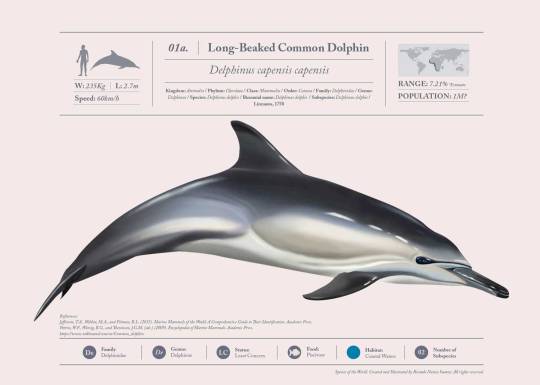
Out of all the animals I've studied and illustrated, dolphins have left the strongest impression on me. Although I didn't know much about them at first, I'm now captivated by their unique shapes and vibrant colors. Learning about these creatures has been a truly delightful experience.
Long-Beaked Common Dolphin
The Long-Beaked Common Dolphin has been a topic of controversy in the past, as it was initially believed to be the same species as the Short Beaked Common Dolphin. However, they are now recognized as distinct species within the same family (Delphinidae). These dolphins are likely the most widespread species in the world.
This particular subspecies is exclusively found close to the shores of Africa and is larger and heavier than its counterparts that are found in various locations around the world.
_________________________________________
Credits:
Jefferson, T.A., Webber, M.A., and Pitman, R.L. (2015).
Marine Mammals of the World: A Comprehensive Guide to Their Identification. Academic Press.
Perrin, W.F., Würsig, B.G., and Thewissen, J.G.M. (eds.) (2009). Encyclopedia of Marine Mammals. Academic Press.
Long-Beaked Common Dolphin
__________________________________________
Thank you all for your positive response to my previous posts on animal awareness. Your support means a lot to me. If you find my content valuable, please consider sharing, liking, and subscribing. Your actions can help spread awareness and promote conservation efforts. Additionally, if you would like to support the project financially, I am preparing some products that I will share in the near future. Thank you again for your support!"
#long beaked common dolphin#common dolphin#dolphins#cute dolphin#SaveTheDolphins#DolphinConservation#illustration#drawing#scientific illustration#wild animals#wildlife#artist on tumblr#illo#animals#mammals#ProtectTheDolphins#MarineLife#DolphinLove#WildlifeConservation#MarineMammals
60 notes
·
View notes
Text
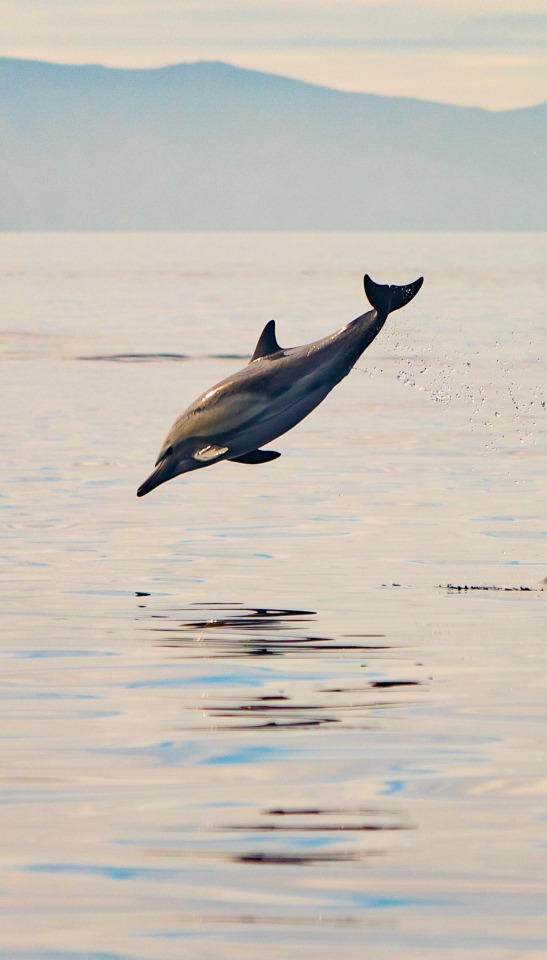
Long Beaked Common Dolphin (Delphinus delphis)
Taken off the coast of California
Status: Data Deficient
A younger member of the first pod of Common Dolphins we came across a little over a week ago! Sea conditions were stellar and these dolphins seemed to really be enjoying it as this and another repeatedly flew out of the water in what looked almost to be a race.
#delphinus delphis#long beaked common dolphin#common Dolphin#dolphin#photography#wildlife photography#whale watching#marine life#ocean photography#ocean#canon 6d markii
4 notes
·
View notes
Note
top 5 whales please
thank you so much, anon, I was hoping someone would ask this
(for purposes of this list I'm including dolphins and porpoises)
California gray whale

(photo source)
These whales are common along the coast of the part of California near where I live. Those are my neighbors.
2. Orca

(photo source)
Love absolutely everything these guys have going on. 10/10
3. Dwarf sperm whale

(photo source)
there she goes
these are some of the smallest whales, measuring on average between 6-8 feet long. it's entirely within the realm of possibility for one to have a life-size plush of one of these guys.
4. Amazon river dolphin

( photo source )
supremely threatening aura. I love them so much.
5. Baird's beaked whale

( photo source )
the second largest living species of toothed whale. absolute units, they're doing a great job.
#anonymous#thank you!#the most incoherent post about whales I'll ever make#words are not working in the brain but I'm always up for Yelling about whales#it was hard to find pictures of the dwarf sperm whale and the Baird's beaked whale#long post#whales
13 notes
·
View notes
Text
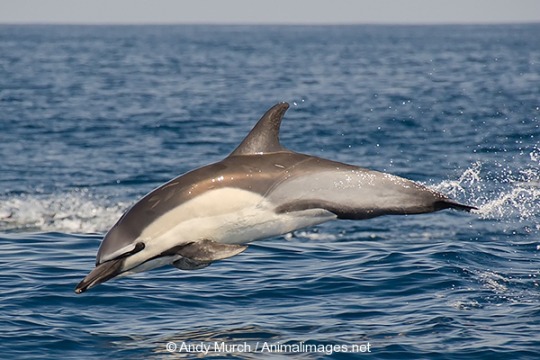
Long-beaked common dolphin | Delphinus capensis
X
26 notes
·
View notes